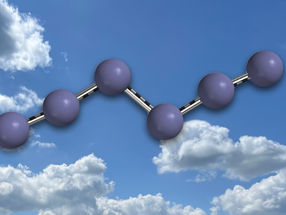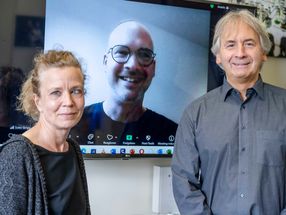Map of feelings of happiness
Finally back in the ice cream parlor! Researchers have now discovered how our brain guides us to such "reward places".
Now in spring, some of us have a particular craving for ice cream. Just imagine: You want to take a walk to your favorite ice cream parlor for the first time after winter. You can probably remember how to get there. How does our brain guide us to such places of reward? In a study recently published in the journal Nature Communications, researchers from the Leibniz Institute of Neurobiology (LIN) in Magdeburg used state-of-the-art methods to answer this question. They discovered that our brain uses a special code to guide us to places that promise rewards.
Dialogue between brain regions
In the recently published study, the researchers focused on the connection between the hippocampus and the nucleus accumbens, an area of the brain responsible for motivation and reward. The hypothesis is that communication between the two areas helps us to recall places where we were previously rewarded. Although it was known that these regions work together, it was previously impossible to directly observe the activity of numerous neurons and their communication partners. "What we have discovered is nothing less than the 'language' that our brain areas use to guide us to the places we love," explains Oliver Barnstedt, first author of the study.
Oliver Barnstedt, Petra Mocellin and Stefan Remy are researching the hippocampus at the LIN - an area of the brain that is crucial for remembering life events and spatial orientation and therefore plays a key role in our memory. Damage to the hippocampus leads, among other things, to the loss of the ability to form new memories. Stefan Remy, head of the Cellular Neuroscience research group, therefore concludes: "The ability to decipher high-dimensional neuronal codes could lead to more precise therapies that directly target the restoration of memory functions."
Innovative methodology
The scientific team led by Oliver Barnstedt used a range of novel optical and analytical methods to understand how the two brain regions communicate with each other. Using special fluorescent proteins and two-photon microscopy, the scientists were able to track neuronal activity and the connections to the reward center in the brain. Over 5,000 neurons were monitored to see how and when they became active - a groundbreaking method to understand how mice train, identify and respond to reward locations on a treadmill reminiscent of a natural environment.
Multidimensional brain codes
The team's research suggests that nearly half of the neurons leading from the hippocampus to the nucleus accumbens simultaneously encode information about place and movement - a milestone in understanding how spatial and reward-related information is integrated in the brain. This multidimensional connectivity enables the brain to anticipate with high precision the places that give us pleasure. It is as if our brain cells map in advance the 'happiness' of a rewarding experience such as visiting our favorite ice cream parlor.
Significance for medicine and therapy
"This study marks a turning point in our understanding of spatial memory and reward - and opens up new avenues for the treatment of diseases such as Alzheimer's and addiction," says Oliver Barnstedt. The insight into high-dimensional neuronal coding offers new approaches for the treatment of spatial disorientation in Alzheimer's patients and for therapeutic strategies for addictive behavior. A deeper understanding of the neuronal processes that have now been made visible could be the key to more effective therapies.
Note: This article has been translated using a computer system without human intervention. LUMITOS offers these automatic translations to present a wider range of current news. Since this article has been translated with automatic translation, it is possible that it contains errors in vocabulary, syntax or grammar. The original article in German can be found here.
Organizations
Other news from the department science

Get the food & beverage industry in your inbox
By submitting this form you agree that LUMITOS AG will send you the newsletter(s) selected above by email. Your data will not be passed on to third parties. Your data will be stored and processed in accordance with our data protection regulations. LUMITOS may contact you by email for the purpose of advertising or market and opinion surveys. You can revoke your consent at any time without giving reasons to LUMITOS AG, Ernst-Augustin-Str. 2, 12489 Berlin, Germany or by e-mail at revoke@lumitos.com with effect for the future. In addition, each email contains a link to unsubscribe from the corresponding newsletter.






























































